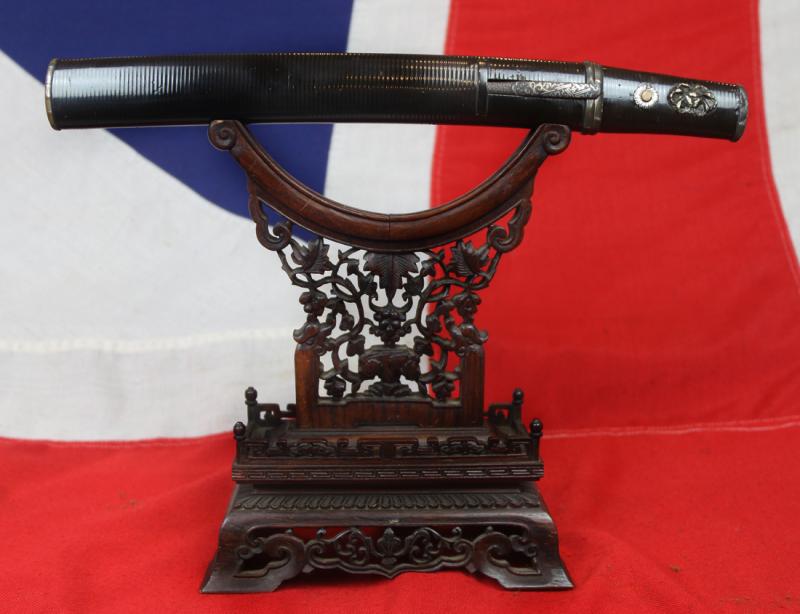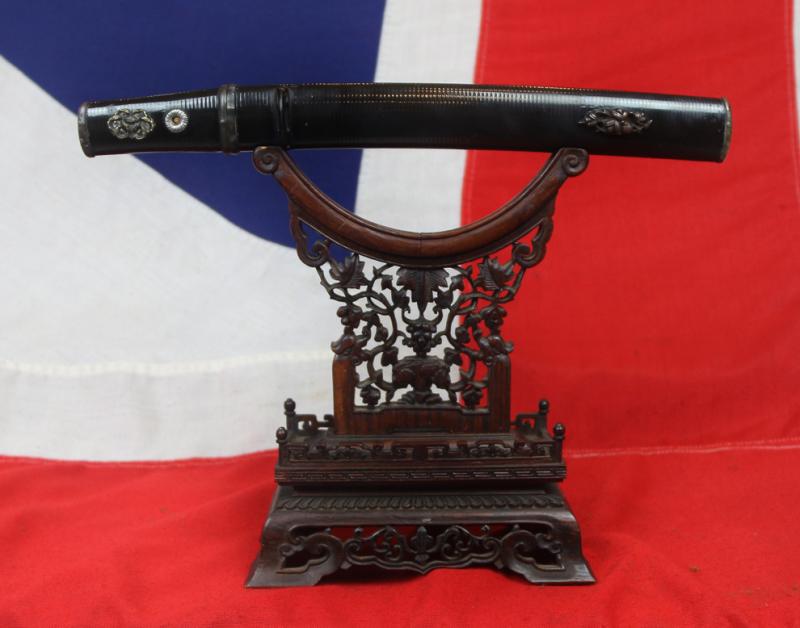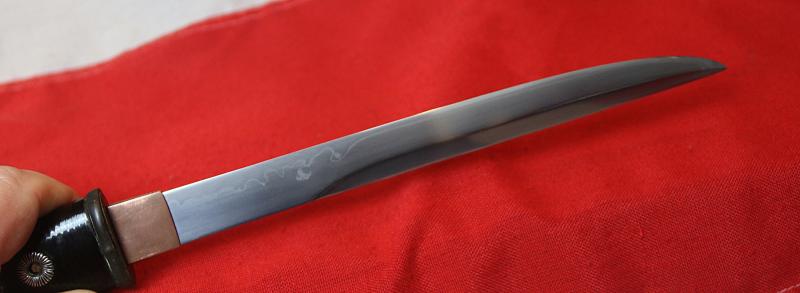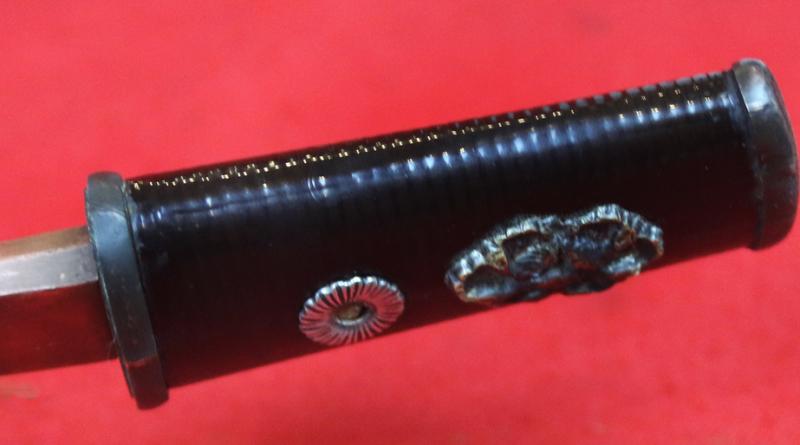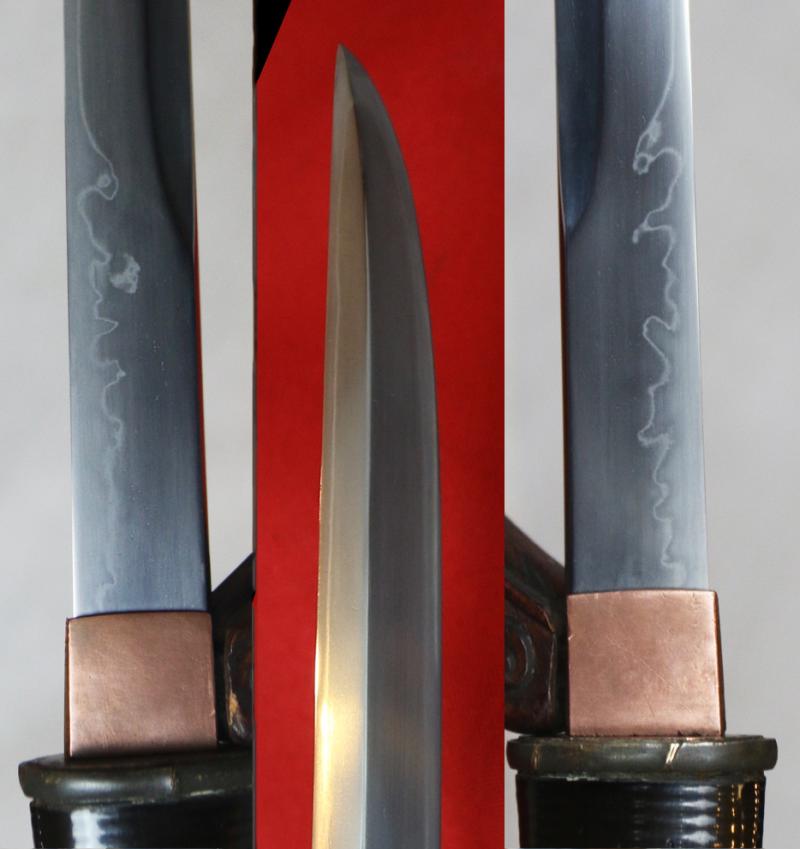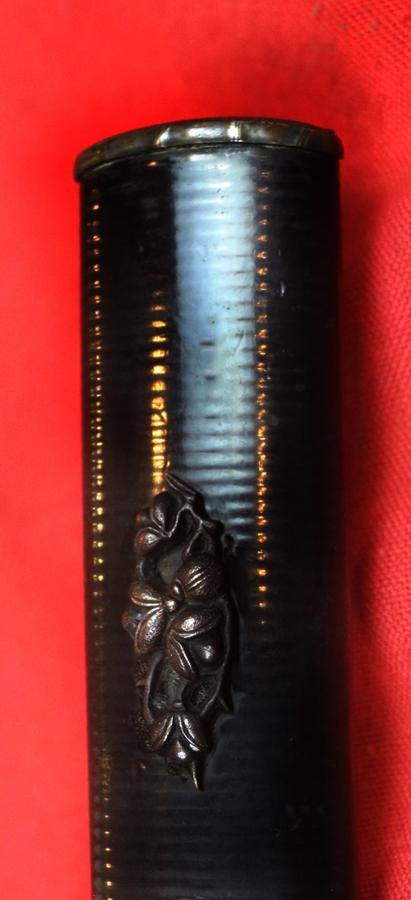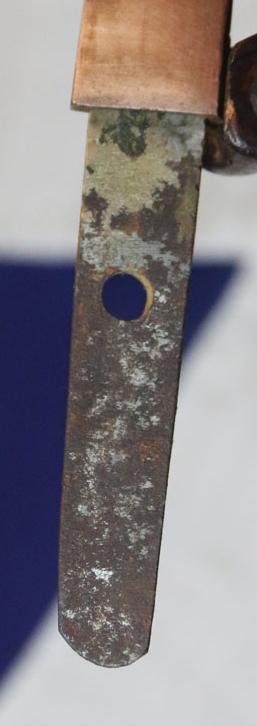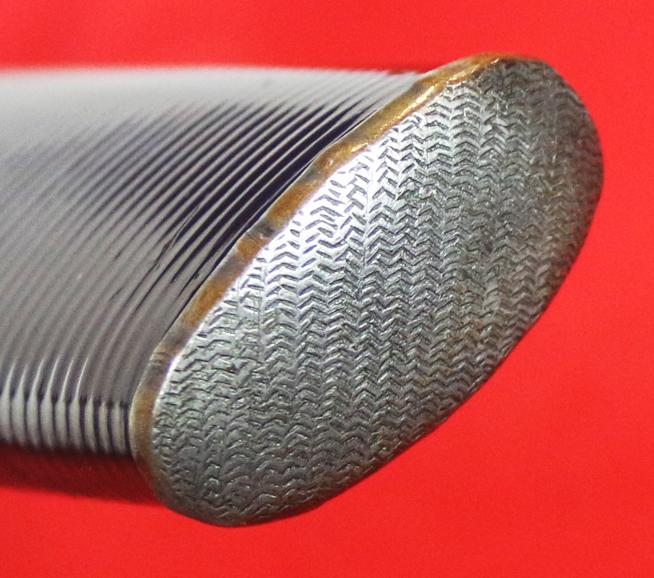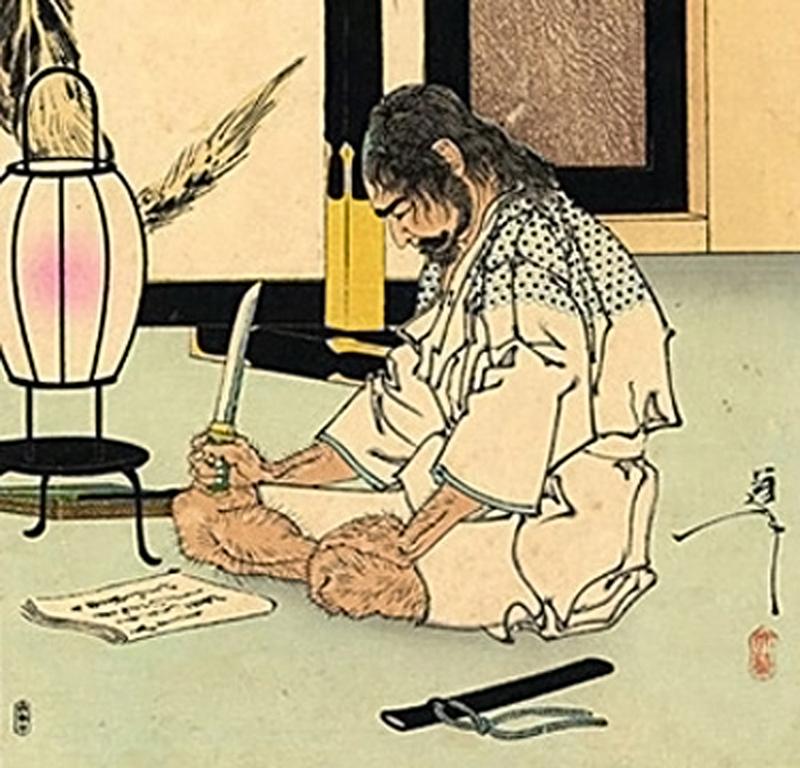A Very Fine Koto Small Aikuchi Tanto Circa 1550 With Rare Hamon Type and Scarce Blade Shape with Amazing Hamon and Polish
It is from a museum grade small collection of remarkable and exceptional samurai tanto, in simply beautiful and amazing polish. previously acquired by a very discerning collector, over many years, seeking an example of all the varying forms and styles of tanto and their blades, from the zenith of the samurai period of the Koto era and beyond.
Very fine kanmuri-otoshi blade shape with vibrantly active hamon at the portion near the tsuka, then, very unusually it is straight, up to the tip, then around the kissaki and back down the back edge to created a double hamon.
The mounts are silvered and the kashira and sayajiri are engraved with a fine matching geometric patterning, and it also has a very elegant kogai set in the saya inlaid with beautiful and intricate silver inlay. The kogai or sword needle, was a samurai's hairdressing tool. The main parts of the kogai are the grip section called do (胴), the needle itself called sao (棹 or 竿) and the little scoop at the back of the grip called mimikaki (耳掻). The saya and tsuka with matching fine black urushi ribbed lacquer. Silver chrysanthemum menuki ana mounts and large silver deep takebori flower menuki, the saya also has a fine takebori botanical based mount of fruit laden branches.
Cherished for its infinite versatility, urushi is a distinctive art form that has spread across all facets of Japanese culture from the tea ceremony to the saya scabbards of samurai swords
Japanese artists created their own style and perfected the art of decorated lacquerware during the 8th century. Japanese lacquer skills reached its peak as early as the twelfth century, at the end of the Heian period (794-1185). This skill was passed on from father to son and from master to apprentice.
The varnish used in Japanese lacquer is made from the sap of the urushi tree, also known as the lacquer tree or the Japanese varnish tree (Rhus vernacifera), which mainly grows in Japan and China, as well as Southeast Asia. Japanese lacquer, 漆 urushi, is made from the sap of the lacquer tree. The tree must be tapped carefully, as in its raw form the liquid is poisonous to the touch, and even breathing in the fumes can be dangerous. But people in Japan have been working with this material for many millennia, so there has been time to refine the technique!
The urushi lacquer has a few smal natural wear marks.
Overall blade length 8.6 inches, full length in saya, 13.5 inches long
Code: 24558

